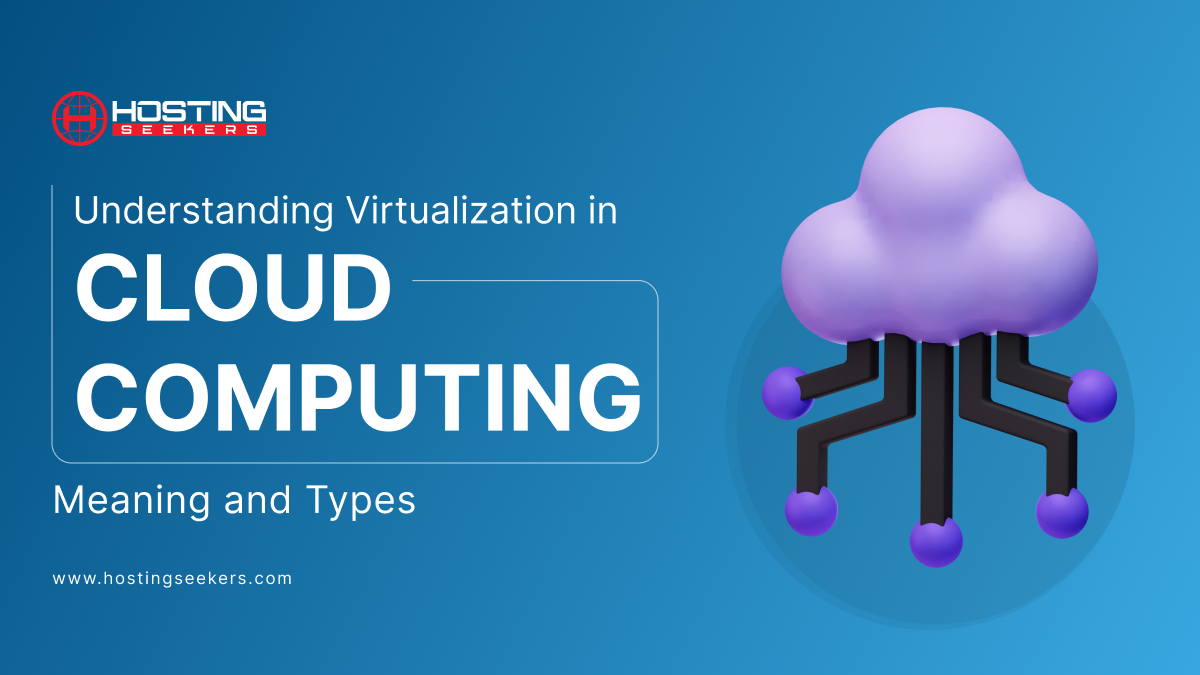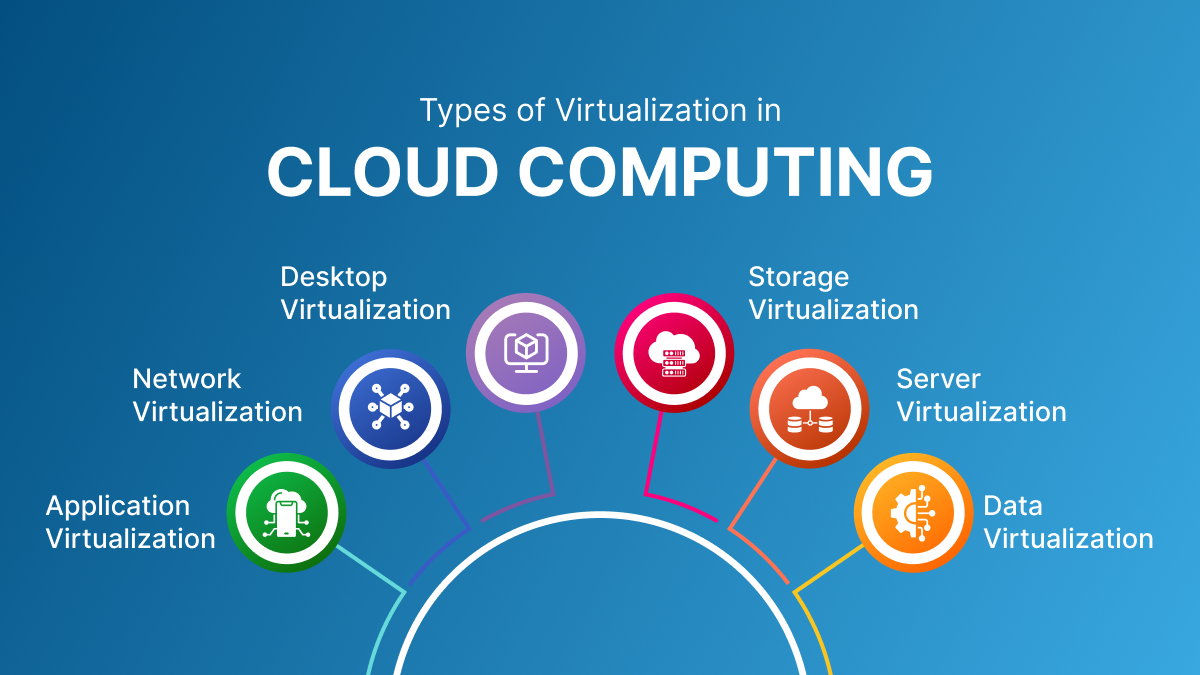
Understanding Virtualization in Cloud Computing: Meaning and Types
Cloud Industry Published on Date: June 12th 2024With the rising innovation of technology in every industry, the user isn’t performing the proper utilization of IT resources, which leaves the system’s resources unused. This can be solved by applying virtualization. This article speaks about virtualization and cloud computing. We will also explore virtualization in cloud computing and understand its process in detail.
Table of Content
What is Cloud Computing and Virtualization?
Cloud computing refers to the delivery of computing services over the internet, including storage, processing power, databases, networking, software, analytics, and intelligence. These services provide flexible resources, faster innovation, and economies of scale. Instead of owning their own cloud computing infrastructure or data centers, companies can rent access to anything from applications to storage from a cloud service provider, allowing them to pay only for what they use and scale up or down as needed.
Speaking about Virtualization is a method of how to separate a service from the underlying physical delivery of that service. It is the process of creating a virtual version of something like computer hardware.
Also, it was initially developed and designed during the mainframe ear. It includes utilizing specialized software to create a virtual or software-created version of computing resource more than the real version of the same resource. With the help of virtualization, applications and multiple operating systems that can run on the same Machine and its same hardware at the same time, maximizing the flexibility and usage of the hardware.
Cloud computing Virtualization enables the sharing of a single physical instance of an application or resource among multiple clients and organizations at a time. It does this by assigning a logical name to physical storage and offering a pointer to that physical resource on demand. Also, the term virtualization is mostly synonymous with hardware virtualization, which plays a crucial role in effectively delivering infrastructure-as-a-service (IaaS) solutions for cloud computing.
Types of Virtualization in Cloud Computing
1. Application Virtualization
Application virtualization provides remote access to an application. The server stores all personal information and other characteristics of the application but can still operate on a local workstation via the net. for e.g., The users who need to run two different versions of the same software. Technologies that use application virtualization are packaged and hosted applications.
2. Network Virtualization
Network virtualization runs various virtual networks, each with a separate control and data plan. It is managed by individual parties that are potentially confidential to each other. Also, Network virtualization offers the ability to create and provision virtual networks, routers, firewalls, load balancers, virtual private networks (VPS), and workload security within seven days or weeks.
3. Desktop Virtualization
Desktop virtualization enables the users’ OS to be remotely stored on a server in the data center. It lets users access their desktops virtually from any location using a different machine. The significant benefits of desktop virtualization are portability, mobility, and seamless software management and installation with patches and updates.
4. Storage Virtualization
Storage Virtualization incorporates a wide range of services that are handled by a virtual storage system. Also, the server is unaware of exactly where its data is stored and instead functions more like worker bees in a hive.
It enables managing storage for different sources and utilizing it as a single repository. Also, storage virtualization software maintains consistent performance and a continuous suite of advanced functions despite changes, breakdowns, and differences in the underlying equipment.
5. Server Virtualization
In this type of virtualization, server masking resources take place. The physical server is categorized into virtual servers’ identity numbers and processors. Therefore, each system can quickly run its operating systems in an isolated manner where each sub-server knows the central server identity.
The benefits of this type of virtualization are significant. It increases performance and reduces operating costs by deploying primary server resources into sub-server resources. It positively impacts infrastructure costs, energy consumption, and virtual migration, among other things.
6. Data Virtualization
In data virtualization, the data is gathered from different sources and managed at one place without knowing more about the technical information like how data is stored, collected, and formatted then arranged that data logically so that its virtual perspective can be accessed by its stakeholders, and users through the various cloud services remotely.
Pros and Cons of Virtualization
Pros
Let’s check out the benefits of Virtualization in Cloud Computing:
- Virtualization allows multiple virtual machines to run on a single physical machine, reducing the need for additional hardware.
- Fewer physical servers mean lower power and cooling requirements, leading to cost savings in energy.
- By running multiple VMs on one physical server, resources such as CPU, memory, and storage are used more efficiently.
- Resources can be dynamically allocated to VMs as required, enabling optimal performance.
- VMs can be easily scaled up or down depending on demand without the requirement for additional hardware.
Cons
Let’s check out the disadvantages of Virtualization in Cloud Computing:
- Virtual machines in cloud computing may not perform as well as physical machines due to the overhead introduced by the hypervisor.
- Managing a virtualized environment can be complex, requiring specialized knowledge and skills.
- Although VMs are isolated, there is a risk of isolation failures that can lead to security breaches.
- While virtualization reduces hardware costs in the long run, the initial setup, including purchasing virtualization software and powerful servers, can be expensive.
How Virtualization works in Cloud Computing?
1. Resource Optimization: Virtualization allows better utilization of physical hardware by running multiple VMs on a single physical machine, reducing idle resources and maximizing efficiency.
2. Scalability: Virtual machines can be seamlessly scaled up or down depending on demand. This significant scaling is vital for cloud environments where resource demand can differ from each other.
3. Isolation and Security: Virtual machines are also isolated from one another, which expands security by preventing VMs from accessing another’s resources.
4. Flexibility and Portability: VMs can be moved on various different physical machines or data centers with minimal downtime, providing flexibility and easy maintenance.
5. Disaster Recovery and High Availability: Virtualization supports snapshotting and cloning, making it easier to backup VMs and restore them in case of failure.
Summing Up
Virtualization in cloud computing is a cornerstone, enabling the efficient utilization of physical resources, increased scalability, and enhanced flexibility. Organizations can maximize resource allocation, reduce costs, and streamline IT management by abstracting hardware and creating virtual environments. Virtualization also facilitates disaster recovery, improves security through isolation, and supports diverse workloads across various platforms.
Frequently Asked Questions
Q 1: What is the concept of virtualization in cloud computing?
Ans: Virtualization in cloud computing involves creating virtual versions of physical resources, such as servers, storage devices, and networks, to improve resource utilization, scalability, and flexibility.
Q 2: What is the conclusion of virtualization in cloud computing?
Ans: Virtualization is essential for cloud computing. It enhances resource efficiency, reducing costs, and enabling scalable, flexible IT environments that meet dynamic business needs.
Q 3: What are the three types of virtualization technologies available?
Ans: Server Virtualization: Divides a physical server into multiple virtual private servers.
Storage Virtualization: Pools physical storage from multiple devices into a single virtual storage unit.
Network Virtualization: Combines hardware and software network resources into a single virtual network.
Q 4: What is the application of virtualization?
Ans: Virtualization is used for server consolidation, disaster recovery, development and testing environments, improving security, and enhancing overall IT infrastructure management.
Q 5: What is the need for virtualization?
Ans: Virtualization is needed to optimize resource usage, reduce hardware costs, increase scalability and flexibility, simplify IT management, and improve disaster recovery and business continuity.
